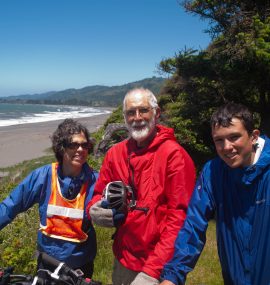Physical activity may limit prostate cancer progression
Exercise can lower risk of dying from prostate cancer
Prostate cancer diagnosis and treatment involve non-trivial risks of serious adverse side-effects. Might increased physical activity following cancer diagnosis reduce risk of mortality of prostate cancer patients? Researchers in Alberta, Canada, used physical activity data from a cohort of 830 men (median age of 69 years at cancer diagnosis) with histologically confirmed prostate cancer to find out. Over an average follow-up of 15.5 years and compared to men who reported less than 42 MET-hours per week (equivalent to about 1.7 hours of moderate physical activity per week) of total physical activity, those who reported more than 119 MET-hours per week (equivalent to 4.7 hours of moderate physical activity) had significant 42 and 35 percent lower risks of dying from any cause and from prostate cancer, respectively. Participants with more than 26 MET-hours per week of recreational physical activity (equivalent to walking 1.2 hours per day) had significant multi-variable adjusted 36 and 44 percent lower risks of dying of any cause and prostate cancer, respectively, compared to participants with less than 4 MET-hours per week of recreational physical activity (equivalent to walking 0.2 hours per day). Adding one hour of walking each day (instead of watching TV?) may improve survival of prostate cancer patients.
Researchers in Sweden used data from 4,623 participants with a mean age of 63 years at prostate cancer diagnosis in the PROCAP study (Progress in Cancer of the Prostate) to determine if higher levels of physical activity after diagnosis predicted greater survival. After follow-up of up to 15 years and compared to men with less than 5 MET-hours of recreational physical activity per day (equivalent to less than 1.7 hours of walking per day), men with more than 5 MET-hours of recreational physical activity per day had significant multi-variable adjusted lower risks of all-cause and prostate related mortality. More specifically, the reductions in all-cause and prostate-related mortality for men with more than compared to less than 20 minutes of daily walking or cycling were 30 and 39 percent, respectively. Higher levels of physical activity following prostate cancer diagnosis predicted greater survival.
British researchers investigated the 10-year outcomes of three ways to treat 1,643 men (average age 62 years at baseline) diagnosed with localized prostate cancer: active monitoring, surgery, and external beam radiation. About 90 percent of the men assigned to the surgery or radiation treatments actually received these (more invasive) treatments, while about 55 percent of the men in the active monitoring group receive one of the more invasive treatments. Prostate cancer progression and metastatic disease were both significantly higher for men in the active monitoring group compared to men in the other two groups. But neither prostate cancer specific mortality nor all-cause mortality (about 1.2 percent) differed significantly among the three treatments. In other words, highly invasive treatments did not lead to longer life for localized prostate cancer patients. Thus, the longevity benefit of surgery or external radiation treatment did not appear to outweigh the risks.
Increased physical activity may slow the rate of prostate cancer progression. This has major clinical importance, given the large potential downsides of surgery or radiation treatment of prostate cancer. Plus, men with localized prostate cancer are nine times more likely to die of causes other than prostate cancer. Thus, increased physical activity might comprise a relatively low-cost, far less invasive alternative approach to treat localized prostate cancer. Researchers in the UK devised a study to determine if a 12-month supervised physical training program would improve physical fitness and be feasible, safe, and acceptable to men with low- or intermediate-risk prostate cancer. The study included 50 mostly sedentary patients (average age 58 years) who were randomized to either the physical training group or the usual care with advice to engage in physical activity group. At the end of 12 months, participants in the physical training group exhibited clinically meaningful improvements in physical fitness (4.4 pounds lighter, lower systolic (13 mm Hg) and diastolic (8 mm Hg) blood pressure and higher quality of life. Recruitment for the program proved easier than anticipated, retention in and adherence to the physical training were both excellent, 92 and 94 percent, respectively. Overall, the program improved the lives of prostate cancer patients.
If you have been diagnosed with prostate cancer, ramping up your level of exercise may slow your rate of prostate cancer progression and reduce your risk of dying from prostate cancer.








